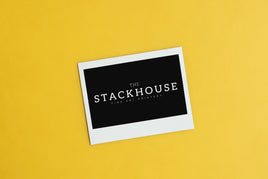TL;DR: Choosing between stretched canvas and canvas panels depends on how you plan to create, display, or reproduce your artwork. Learn the pros and cons of each to find the best fit for your next painting or print project.
Understanding the Two Canvas Types
Whether you’re painting an original or printing a reproduction, selecting the right canvas base can significantly affect your results. The two most common options — stretched canvas and canvas panels — share a familiar texture but differ in structure, handling, and presentation style. Here’s what sets them apart and when to choose each one.
What Is a Stretched Canvas?
A stretched canvas is made by pulling canvas fabric tightly over a wooden stretcher frame and stapling or tacking it to the back. This technique creates a slightly springy surface that many artists love for its tension and texture. Stretched canvases are ideal for both painting and professional fine art reproductions, offering a gallery-ready, frameless look when wrapped around the edges.
They’re available in a wide range of sizes — from small studio pieces to large-format displays up to 60×120 inches. For artists and collectors, stretched canvas prints are durable, easy to hang, and have a timeless presentation that works beautifully in both home and gallery settings.
Explore Gallery-Wrapped Canvas Prints to see how we reproduce artwork with depth, texture, and exceptional detail.
What Is a Canvas Panel?
Canvas panels consist of canvas fabric mounted onto a firm backing — usually cardboard, MDF, or foam board. This approach creates a compact, lightweight surface that’s easy to store, carry, or frame. While they lack the three-dimensional edges of stretched canvas, they’re highly practical for smaller works, studies, or plein-air (outdoor) painting.
Canvas panels also make excellent options for reproductions intended for framing. Their flat profile and rigid surface allow for easier handling and consistent printing results across multiple copies.
View our Canvas Board Prints for a professional, durable take on this classic surface.
Stretched vs. Canvas Panels: Key Differences
- Mounting Method: Stretched canvases are tensioned over wood frames; panels are mounted flat on rigid boards.
- Depth and Texture: Stretched canvases have dimensional sides suitable for frameless display; panels offer a thinner, more compact profile.
- Durability and Portability: Panels are more portable and less prone to puncture during transport, while stretched canvases are more resilient to warping.
- Presentation: Stretched canvases are often hung without frames for a modern aesthetic; panels are usually framed for a clean, finished look.
- Price: Canvas panels tend to be more affordable, making them a great option for bulk prints or budget-friendly editions.
Which Option Should You Choose?
If you value a traditional, frameless display and want your art to have dimension, stretched canvas is the way to go. If you prefer a lightweight, versatile, and cost-effective option — especially for smaller reproductions or framed presentations — canvas panels are an excellent choice.
Both surfaces maintain the distinctive canvas texture artists love and can be professionally printed for lasting color and clarity.
Ready to bring your artwork to life? Order your next Gallery-Wrapped Canvas or Canvas Panel Print today, and let The Stackhouse handle the craftsmanship from print to finish.










